~ 24 ~
~ The Study of Threes ~
http://threesology.org
Researchers as of 8/29/2019
| Devil's Advocate Series: | ||||||||
|---|---|---|---|---|---|---|---|---|
| 1 | 2 | 3 | 4 | 5 | 6 | 7 | 8 | 9 |
| 10 | 11 | 12 | 13 | 14A 14B |
15 | 16 | 17 | 18 |
| 19 | 20 | 21 | 22A 22B |
23 | 24 | 25 | 26 | 27 |
| 28 | 29 | 30 A | 30 B | 31 | 32 | 33a | 33b | 33c |
| 34 | 35 | 36 | 37 | 38 | 39 | 40 | 41 A | 41 B |
On the previous page I referenced the main comment on the three-patterned Uninomial- Binomial- Trinomial structure existing in the standardly referenced "Binomial" Taxonomic system used in biology. There is no "quadr(a-e-i-o-u)-nomial used in the repeatedly referenced "binomial" taxonomic systems of life forms, though mathematics is such that one can venture to metaphorically claim it is a "living" system... yet it too finds itself being expressed by the human mind in a "low number" fashion. While the "uninomial" portion of the Taxonomic systems is not frequently pointed out, the usage of a single name to reference a species is commonly used. Likewise, the trinomial label may not be used by everyone.
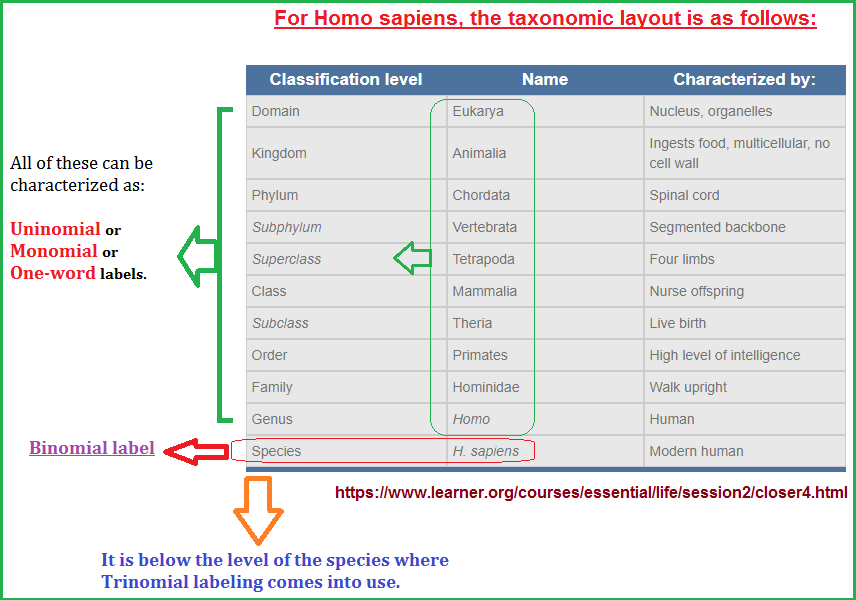
From a one-two-three (Uninomial-Binomial-Trinomial) taxonomic system we humans have ventured to include another three-patterned addition to the system which reads like a Sociology illustration of "lower class, middle class and upper class" designations. (The items with question marks are my additions.):
| Subcategory | Primary Categories | Supercategory |
|---|---|---|
| [Subdomain?] | Domain | [Superdomain?] |
| Subkingdom | Kingdom | Superkingdom (Domain) |
| Subphylum | Phylum | Superphylum |
| Subclass | Class | Superclass |
| Suborder | Order | Superorder |
| Subfamily | Family | Superfamily |
| Subgenus | Genus | [Supergenus?] |
| Subspecies | Species | Superspecies |
Taxonomy and Organism Classification
Similarly, though distinctively alternative in its expressiveness of enumeration as is to be expected in a field where numbers and associated symbols make up the predominant cultural vernacular, we do see a triple-patterned "mononomial- binomial- trinomial" system of labeling, with "polynomial" as a means of labeling a repetition of monomials... which is rather silly when you think about it— since it is reminiscent of the old teaching adage:
Variously, the above phrase was referenced (via a simple search in Google to provide a few examples):
- As an Aristotle quote: Give a great speech (3 tips from Aristotle) by John Baldoni
- As a heuristic rule for teaching: Teacher - teach thyself, and then teach others by your example: some 'simple truths' about teaching and learning by Dr. Keith S. Taber (FRSA: Fellow of the Royal Society of Arts, UK))
- as part of a sermon: (Quote Investigator)
- As a boring presentation meant for sixth graders: Tell Them What You're Going To Tell Them, Tell Them... Oh Spare Me! by Brett Rutledge
- As a Dale Carnegie quote: Speak for Success! by Gary Gernard
- As part of advice of what not to say: Want People to Listen? Never TELL Them What You’re Going to Tell Them by Sam Horn
- As a need-to-be-updated pattern-of-three advisory: Updating the three "Tell Them" statements; Issue #291 July 23, 2013 by Dave Paradi
- As a means of advising people to move from a repetition of three towards adopting a pattern-of-two (what to say/what not to say): Giving a Presentation? Don't Tell 'Em What You're Going to Say by Nick Morgan
It is not too infrequent one encounters the view that memorization proceeds better when some type of "chunking" methods of association is used, often in groups of three:
- day-month-year
- 3-division numbering (area-group-serial) in USA social security numbers The SSN Numbering Scheme
- area code, prefix numbers, suffix/line numbers (What do digits in phone numbers mean?
- Bachelor's- Master's- PhD (University degrees)
- Small- Medium- Large
- ones- tens- hundreds (comma) thousands- ten thousands- one hundred thousands (comma), etc... [3 to 1 ratio]
- short- medium- tall
- young age- middle age- old age
- slow- medium- fast
- cold- warm- hot
- spring- summer- fall... winter... spring- summer- fall... etc... [3 to 1 ratio]
- etc., etc., etc...
Groups of three show up quite frequently (but not exclusively), more than the value "7", even while it has been argued that seven pieces appears to be the cognitive limit for any reliably consistent usefulness. (The old 1956 George Miller's thesis comes to mind as a frequent reference to both of these notions, though his "7 plus or minus two" represents three numbers: 5-7-9... but the simple recognition of this reference escapes most people because their mind's are not organized to consciously apprehend the association... even if they unconsciously append some familiarity to the underlying pattern-of-three formula. His academic paper is entitled The Magical Number Seven, Plus or Minus Two Some Limits on Our Capacity for Processing Information.)
The apparent silliness of repetition (redundancy) brought forth as something to be derisive about can also be is seen in the genetic code and apparently in the arrangement of atomic nuclei (where, for example, the three states of matter: gas- liquid- solid, or three degrees of stability: stable- unstable- highly unstable, etc..., imply a transitioning phase suggesting overlap)— and appears to be a behavioral hold-over from the two-lettered "multibly" phased "reduplications" (repetitions) recognized by those doing research on infant babbling (e.g. 1 ba- 2 ba-ba- 3 ba-ba-ba.....); and is clearly seen in the courtroom expression of "tell the truth, the whole truth, and nothing but the truth", which actually conceals the many ways lying is incorporated into a very biased judicial system since money, media manipulated public opinion, politics, religious influence, etc., can sway the judicial proceedings and outcome. And let us not forget to express the three-patterned phrase of "In the Beginning was the Word, And the word was with God, And the Word was a god". (We might assume that the latter portion being a reference to spoke language that may have become more articulated due to a developing human brain and perhaps indicates a change in the auditory process and the vocal apparatus [Larynx, etc...) See this link for a reference to the many "threes" related to language: Language threes page 1.
A suggested boredom for a particular phrase or comment underlines not necessarily how frequent a given phrase or comment may be used, but the overall behavioral circumstances a given person is exposed to. In order to hear such repetitions one must also frequently be exposed to such as a expression of a behavioral repetition which may be the underlying cause of their presumed boredom with a given phrase. Since repetitions are manifest all around and through us each day, to point out one and not the others might well signal something else taking place with a person that they might want to address.
On the previous page I also made reference to this three-patterned ensemble as being reflective of the three-patterned profile seen in the early efforts of humanity in its development of a numbering sense which assisted not only in accounting for perceptions of different observations that came to be linked into a classification system, but also that it became a system of accounting applied to other activities, the main one being in commerce. In addition, the three-patterned ensemble was compared to the existence of other three-patterned ideas that are not necessarily exhibiting an obvious number sequence in the labels being used. But that nonetheless the examples exhibit a segment of how humans recurringly think, and therefore constitutes at least one segment of the human mind's profile. It is a segment which illustrates the recurring usage of low number values to express ideas about fundamental forms and/or functions occurring with nature and the perceived objects thereof. And I also made the claim that this repetition expresses the existence of an unrecognized constraint being imposed on human thinking, which necessarily involves imagination.
The development of a sense of number and ordering was a crude taxonomic model upon it attributive application, such as arranging the quantity of different life stock, goods, family members, etc., into enumerated groups for which the words tally, ledger, list, etc., come to mind as a means of giving oneself a visual enumerated ac-count of what they or another has as a means of comparison and perhaps trade through whatever system of bartering was in vogue for a given time and place. All of them, we might imagine, began with a single entry system that was later evolved into a double-entry accounting system. Double Entry System Bookkeeping and Accounting (How Double Entry Principles Contrast With Single Entry). From the single and double forms of accounting a triple form was introduced in the 1980s: Triple-Entry Accounting. With respect to quadruple accounting, there are a few different interpretations of what it is:
- Definition: Quadruple-entry bookkeeping (The simultaneous application of both the vertical and horizontal double-entry bookkeeping.)
- Inter-Entity Bookkeeping Networks: Representations and Applications (Integration of two double- entry accounts)
- Double entry/quadruple entry (Double-entry accounts combined from two separate institutions. Two double entry accounts of a shared transaction by two separate entities are termed quadruple entry accounts.)
- Double-Entry and "Quadruple-Entry" Bookkeeping Four different entries for a single individual in one ledger is tallied as a "quadruple entry" accounting method.
- Balance Of Payments: Part 2 – Double Versus Quadruple Entry Bookkeeping Double-entry accounting involving two transactors.
It is rather surprising no government economist or government accountant has yet promoted the idea of a "Polyuple" entry model in order to further obfuscate an otherwise easy to comprehend dichotomous orientation so that more money from taxes can go unaccounted for and be funneled into private projects or bonuses. Leave it up to the dichotomist thinking people to seek something beyond themselves by creating an overlapping quagmire of repeating 'twoness' that makes them feel more sophisticated in their thinking (or can be used to confuse the simple mindedness of those who still believe in all the of-by-for the people malarkey being spoon fed to them through a government sponsored public school system)... and yet the effort to think beyond one's "twoness" implies the human brain is striving to progress beyond the "two" into a third realm... with an artificialize third realm being called by different names with an underlying repetition of the "two", but no actual third step is being achieved.
The aforementioned constraint on human cognition revealed in the repetition of low values being expressed in our ideas, manifests itself in every subject you encounter, including mathematics... otherwise computers would not be put into use as a means of increasing the speed of doing certain math problems that would take weeks, months, or even years for humans to do them manually because of their usage of small number set thinking models. While this in itself may not suggest to some readers that a constraint in human thinking exists since it portrays more of a physical restraint; the presence of an expressed link to exhaustibility implies constraint nonetheless, since the brain remains a physical entity subject to multiple varieties of dependency (food, oxygen, chemicals, genetics, etc...). Let us take one example that many readers are possibly familiar with involving the board game named "Monopoly" which portrays a mindset dealing with "one", be it a single person who monopolies real estate, commerce, politics, religion, science, sports, industry, etc..., or a group of people. Because the name suggests one, some people come up with the idea of a "two"-based formula that they might reference with a different "two" prefix such as duopoly, biopoly, or diopoly. Further sequential variations involving numerousity reveal such ideas as triopoly, quadropoly, etc., yet we come across a limitation of the "opoly" suffix.
It should be further noted that in thinking about the "two" and "three", one can get caught up in the consideration to the point that they develop yet another binary model consisting of a two versus three orientation, though they may think otherwise... but such a foothold into the realm of trinary (or ternary) contemplations appears to be a bog or quicksand pit that is part of the territory being explored. Here is a variation of such an exploration:
 |
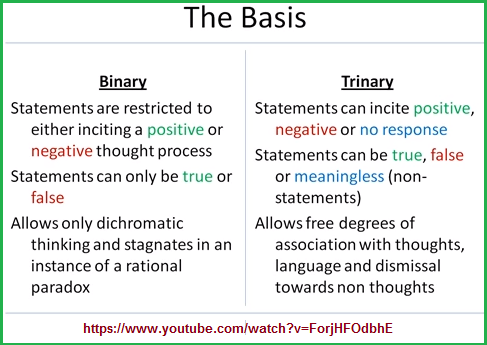 |
Trinary vs Binary Introduction by True Emergence |
|
Whereas I did come across someone using the idea of "Octopoly", it was merely a representative visual formula though the functionality of the Monopoly game was left intact, despite there being multiple variations. In one instance I found "opoly" applied as a presumptive increase in valuation: "My friends and I wanted to play the most intense game of monopoly ever. I present, Armogopoly/Behemopoly/Quintopoly/King Kopoly. However, the overall efforts represented little more than a variation of monopoly that was "intensified" through a multiplicity of Monopoly and not an actual enumerated step beyond the "one" value. Like chess and checkers whose game pieces may be multiple or few, the pieces are constrained to move in three directions: Horizontally, Vertically, Diagonally. No less, the 64 squares actually 'squares' well with the 64 count of amino acid considerations for the lay out of the triplet code idea (singlet and doublet codes are too small, while quaruplet, quintuplet, etc. codes are too large... much like the choices Goldilocks had). Let me provide some images of the "opoly" variations, making note of how they are preeminently oriented towards business (and thus limited by this predominant application), and that the variations speak of the cognitive limitation apparently being encountered in all subjects, though advocates may use language to give themselves the illusion of not being limited:
Uniopoly Example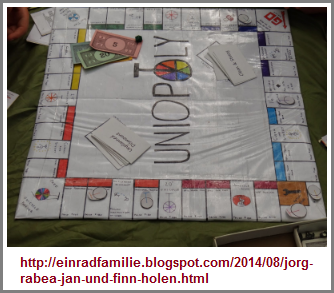 |
Monopoly Example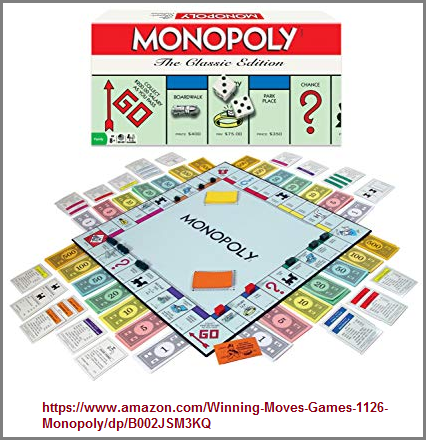 |
Biopoly Example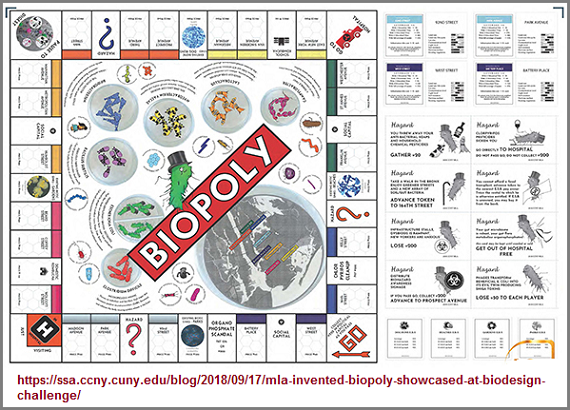 |
Duopoly Example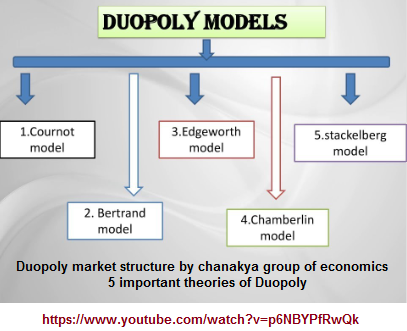 |
Triopoly Example |
Quadropoly Example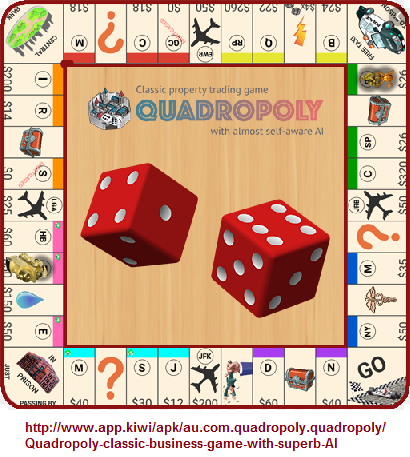 |
 |
|
Sex (not Six)-opoly Example |
Polopoly Example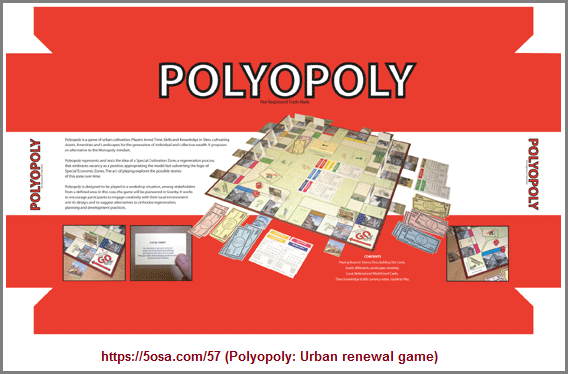 |
Notice the absence of "opolys" with other Greek prefixes such as penta- (five), sex- (six), septa- (seven), non/nov- (nine), deca/deci- (ten)... etc., (including an absence of the "non-opoly" consideration as well as negative-opolies), though you may find a variation of one or more of these somewhere at sometime in some manner. The overall point is to bring to the forefront in discussing cognitive limitations is that we can find multiple examples of recurring low number values— along with the usage of words and other illustrative devices which are inclined towards giving humans the illusion of not being limited... such as the human ego might want to delusion itself with. In identifying the presence of constraints and repetitions which involve absences and mutations along multiple low number trails, we will begin to map the territorial extent of human conceptualization and turn our attention towards that which is causing the constraint... which appears to be linked towards maintaining some semblance of equilibrium on a planet that is incrementally decaying and taking all of life with it towards an obsolescence. Maintaining some semblance of an equilibrium in an environment that is slowly decaying causes the development of a system of conceptualized network of inter-active rationalizations to justify what we do in order to maintain that self-defeating form of equilibrium. We need to see the territorial limits of our mental functioning concealed in its repetitions and camouflaged by language and application. We can not possibly intentionally seek to transgress our constraints of thinking and imagination (instead of doing so accidentally/serendipitously as in so many cases of individualized exploration in different subject areas), if we do not systematize our collective (instead of happenstance) efforts and apply this to our various systems of education. We must move beyond our present "happy-go-lucky" model of vagrancy with its gypsy-like eccentricity and hope to chance upon some pot of gold at a presumed rainbow's end. Humanity's idleness must come to an end... and this does not mean that we need to force humanity into a different type of slavery nor indentured servitude for the moronic stupidity of those who come to place themselves or some ilk-minded other in a position of authority for which they have no business in because they lack the necessary vision for assisting humanity towards an actual development of progress. As it stands, we have a social situation in which the three large atomic nuclei: protons- neutrons- electrons, are joined by morons. Such is the state of the world, particularly seen in the U.S... and incredulously, millions of people like this representation of conceptualization because they function well within its configuration... which implies not only Trump, but Congress, Supreme Court, Security Agencies, Attorney General... and just about all those who were selected for a position by the moron, including the predatory vulture mentality of the Stock Market with its many faceted monopolies. Here is another 3 to 1 ratio example:  |
As in my encounters with other patterns-of-two; they often allude towards an application of more-than-two... like a primitive trying to articulate a higher number valuation but has reached a cognitive limit, and must pursue a different reality of perception; just like those who are immersed in the "bi"-ologification of basic computer language using the zeroes and ones based on the electronic off/on circuitry... though some are trying to think beyond the "two" (binary) and conceptualized a trinary system... which has presently led them into the realm of quantum computing... though this may not be the appropriate path, because they are unknowingly using a two-patterned frame of reference on an assumed three-valued approximation. (They are unknowingly trying to pigeon-hole a three into a two... like a square peg into a round hole or vice versa.). Like primitive peoples whose mentality had to make a leap of consciousness into a "three" realm which displaced the previous notion of "many", computer scientists are intellectually struggling with how to make the next cognitive leap beyond the philosophical into the practical, without realizing that the "two" has been enculturated and it is the overall culture of computing which needs to be revolutionized in order to bring about a change in conceptualizing... just as revolutions in culture were needed to change religious, scientific and political practices of thought. The binary in computing is an expression of a binary presence in the culture of humanity that some are striving to make into a singularity (such as the simplistically-minded self/sexual-centered LGBTQ orientations), which is culturally regressive for humanity and has damaging reverberations into other cultural avenues of activity which they all want to take psychotically-derived Pride in.
While some researchers may claim their respective trade was supplied with the biases of where, when and how they were taught and that allowances must be made for attempting to include a greater sensitivity for studying information in other cultures so as not to misidentify and mislabel a given article or item by forcing it into a category that is not used as such by the culture in which it appears, language differences need not hold us back if we are merely looking for overt expressions of enumeration. The problems occur when one attempts to translate a particular functionality into a given niche, wherein fact it may not readily fit because it shouldn't have been place there by those who created the categorization initially. In other words, even if a set of three have been used by a given culture for generations, this should not be construed to mean that the adoption of the pattern was actually appropriate, even if it its faults are minimized through interpretations and definitions meant to obscure or correct mistakes. The originators of an idea could have been wrong about one, two, or the entire pattern but modified it to fit with changing ideas that later observers identified as being wrong but wanted to maintain the old references because of some tradition or other sentimentalized inclination. In other words, language can get in the way... even for those who originate an idea. They may mean well, but this intention to do good and be honest does not automatically mean their intention is correct.
With respect to patterns-of-three, it is a generality that can simply reference a single item such as the number "3", or two items such as 1 and 2 to create a three, or three separate items such as 1 + 1 + 1, though any sorts of symbols or absence of a symbol in any of the expected three slots may be missing. If we wait for only specifically selected instances of a given type of "three pattern" to occur, we do not make an allowance for the fluid variability of language or thought processing, though we identify a limitation thereof. Then again, if we are open to multiple variations, we can find ourselves in such an open field that we might be blamed for an unrestrained arbitrariness that antagonists want to discredit by offering any and all ideas to the mix, thereby promoting the idea of an "anything goes" type of stew that is concocted by whatever is available. And yet, if we draw the line too tightly, an idea meant to incorporate large amounts of information from divergent sources that are not traditionally considered, are left out and the traditional approach is retained because it has had a long history of development to get in its present form and functionality which serves its adherents well because they are used to it and have learned how to use it with great skill.
Very often when applying the tools of one trade to another, such as numbers to an otherwise word based labeling system, the application of numbers becomes labeled a type of mathematics and efforts are thus directed along this route. Hence, the uninomial-binomial-trinomial categorization becomes transformed into a three-patterned binomial- trinomial- polynomial system of expression and orientation, but the idea of a "three-pattern" as a recurring low numbered cognitive pattern is lost sight of. The language of mathematics takes hold along with its tools and applications away from the realm where language is the predominant cultural setting for cognitive activity. Those involved in mathematics come to think their ideas are superior because number symbols are thought to strip away biases and present the fundamental nature of thought processing, even while it does not explain it within the typical activities of mathematics. It can be used to convey ideas about observed behaviors but is not customarily viewed as an expressed behavior of limited cognition itself. Instead, many come to think that human created mathematics is somehow a universal language that aliens would use to communicate to us with, instead of viewing it as but another quirk of human activity like beavers building a damn, bees creating a hive, birds building a nest, or spiders making a web. Mathematics is just a tool of the type of animal we are. It is human ego which defines it as something more.
Here is a type of Polyopoly referenced in the context of Mathematics: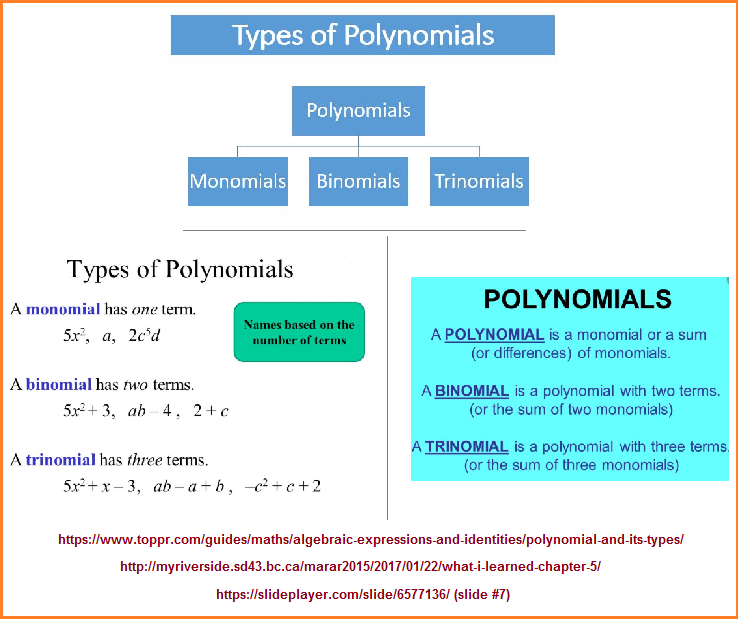 |
| While not strictly a math-only example, the following nonetheless describes a three reference followed by a non-enumerated "other" example giving us a 3-to-1 ratio. 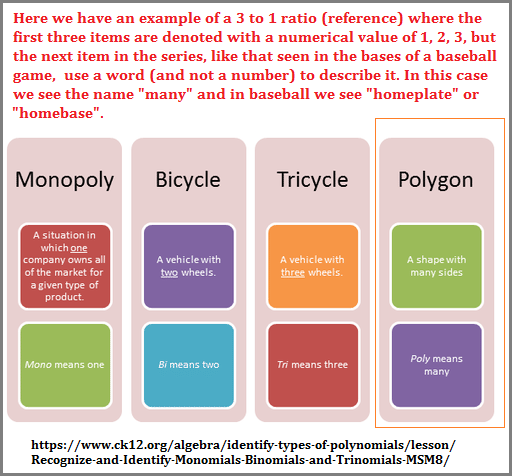
|
Yet, just saying that there is a repetition and making such claims about constraint is not enough. They need to be backed up by examples. If there actually does exist a constraint in human cognition, then we should be able to find it in all exercises of the human mind with respect to the varied topics and subjects humans involve themselves in, even though this too is an expression of limitation... and the recognition of this limitation is an expression of an observer's own personalized system of accounting. Because many people have a primitive sense of accounting in that the whole or the main of their sense of number is reflected in the primitive "one- two- many" schema, they quickly come to identify an idea of much, more or many in a very limited sense, but their ego seeks to be defined in an unlimited idealization, whereby limitation becomes defined in an unlimited sense by way of an illusory system of vocabulary they rely on. In other words, they reach a limit but describe the limit in unlimited terms so as to conceal the fact of an existing limitation... which they, for one reason or another, think one or more others might think to be an expression of mental improvisation commonly referred to as being stupid, dumb, uneducated, etc...
In order to accept the idea of limitation such people would then try to compensate by saying "everyone" is the same and that this "everyone" is a large quantity that once again helps them to assert an illusion of greatness, surplus, and in some sense, non-limitation. Humans don't want to think of themselves as being limited... at least in the sense of not being entitled to an opportunity even if it is not realistically within their reach. They want to be able to dream, to imagine, and not be confronted by any suggestion that such words are used as compensatory reactions to a realistic sense that they are limited and so are their opportunities... even when policies, laws, traditions, and their culture create words, ideas, etc., suggesting otherwise, like the frivolous notion of an "American Dream", that is arbitrarily defined according to one's own interests that may have been presented to them by way of some artificialized advertisement.
The recurrence of a small set of re-used patterns that can be enumerated as a means of identifying more clearly the similarities of thought processing as well as the disparities and divergencies, all provide evidence of an exercised cognitive limitation under the circumstances humanity is subjected to. This does not necessarily mean humans can not break the bonds of their recurring mental exercises, it only means that under present conditions, humanity is using a whole system of rationalization to keep itself confined to a set of circumstances that enable it to maintain some semblance of equilibrium on an incrementally deteriorating path which can only lead to an eventual extinction.
You may call a collection of ideas referenced by numbers with the label "numerology" and then defined this word in a way as to negate it or otherwise interpret it to be without significance, but the fact remains it provides us with a usable tool by which to identify recurrences of thinking models that exhibit low number values, again and again and again.
Typically, numerology deals with helping oneself or another decipher number patterns which they or another make note of as re-occurring in their life and therefore may suggest a presumed deeper meaning... which is a variation of the "chosen one" preoccupation regularly seen amongst those who persist in idealizing they have some "higher" or greater, or unique purpose in life... which very often encourages them to be their own cheerleader and overcome adversity as well as detours, where another without such a personalize conceptualization of themselves, would give up or give in to whatever prevailing circumstances arise that may cause them to undermine their morality, self-respect and otherwise commendable virtues.
Characteristically, the means, methods and interpretations of a particular number recurrence at a particular time of day (or night) under one or another particularized circumstance, is most often quite arbitrary, though some numerologists have learned how to teach themselves to heighten personal abilities described as an intuitive appreciation of one or more human conditions that they become adept at applying for the benefit of another or themselves. It involves an understanding of how people learn (are self- or institutionally educated, as well as by way of "the road of hard knocks"), psychology, sociology, medicine, anatomy, spirituality, pagan ceremonialisms, enculturated traditions of ceremony, and multiple other subjects; though many self-professed numerologists have only a general or specious knowledge about one or multiple subjects... while some may be self-taught in a singular subject area to the point of having acquired an extensive knowledge. However, this is not the rule but the exception.
Whereas in most cases those who "dabble" in numerological schemes limit their interests to limited explorations of a few subjects, a threesological approach attempts to be more comprehensive and deliberate in its application towards unraveling the obvious and subtle characterizations of comparability in a evolutionary-developmental sense, without attempting to assess some presumed individualized meaning akin to some routinized numerological orientation involving a commercial interest. Though there may be some cosmologically directed "code' being perceived and translated by the limitations of human physiology; similar to the coarse and crude perceptions and insights of natural events that many former theologically directed individuals interpreted by way of a biblical correlation which they used as an inference of a God's presumed plan or direction, I am not attempting to suggest such an idea those others reading my collections of threes examples may want to do so.
Look at every single collection of numerology and even though you may find one or another large number reference, which very often describes an underlying excessively active ego as the originator; the largest portion of the examples being provided all exhibit low number values. This tells us how the human mind is working under the present Earthly environment humanity is subjected to. And very often we see that the sequence being interpreted is an expressed pattern-of-three. And yes, there are patterns-of-one, two, four, five, six, seven, eight, nine, etc... But, the list does not contain all number patterns... it exhibits a recurring usage of only a few, either alone or in combination with one or more other numbers such as the mono- bi/di- tri sequence. And quite consistently, we can observe that such a sequence exhibits the presence of an underlying maturational development. However, maturational development sequences may exist but they are overlooked, misinterpreted and very often mislabeled to an extent which may not explicitly indicate a sequential enumeration such as 1-2-3. Nonetheless, reversals, stop and go, and mutations as well as extinctions, truncations, digressions and oblations can be present... including a wholly different type of developmental state which does not give anyone the impression that a particular sequence even exists or has ever existed, though in some cases a few researchers have ventured the idea that the possibility of a precursor stage no doubt exists or existed and the transition from it to a formally recognized and enumerated later stage is either absent or under went a dramatic alteration so as to obscure its connection to one or more later stages.
For example, and though I have already mentioned this previously, I do so again because it provides the uniqueness of being an easily recognized pattern-of-three while also illustrating the apparent absence of one of its developmental stages. This example is the three Germ Layers, known as the Ectoderm- Mesoderm- Endoderm.

And even though we place the "Mesoderm" in the middle, it actually evolved as the third item, with the Ectoderm and Endoderm preceding it. Interestingly, these three are sometimes viewed in terms of a foursome, with the addition of the Neural Crest being labeled as a fourth Germ layer, only because the researchers are not familiar with the notion of a 3-to-1 ratio that can be easily identified as an optional perspective of categorization by being compared by the Three Musketeers, who exhibited a 3-to-1 ratio by the addition of another person called D'Artangon. (Athos- Porthos- Aramis) In other words, the inclusion of the idea of a 3-to-1 ratio acts as a comma like that used in mathematics to divided the three first place settings (ones-tens- hundreds) before the next three (thousands- ten thousands- one hundred thousands) are likewise grouped into a three ensemble followed by a comma. The usage of words instead of numbers to illustrate thought processing should not distract us from recognizing the existence of an enumerated form of thinking taking place, nor that a recurrence in limitation is occurring again and again and again.

With respect to the three Germ layers, animals from Earth worms to humans are said to develop from three Germ layers, while lower or more primitive life forms are said to develop from two Germ layers, but there routinely are no examples given for a one Germ layer except for the sponge... on occasion. Yet because the develop from a single Germ layer is not distinct to some interpretations, the selection of the sponge as an example is sometimes refuted. Nevertheless, we can entertain the idea that there was a one Germ layer, even if the "layer" was in a form and fashion which did not exhibit the same form and functionality of the other two later Germ layers, yet gave rise to their eventual developmental. While the processional development of the first Germ layer may be lost to us because it occurred so long ago an in a way that conditions for its development were fleeting due to the staging of particular environmental circumstances, we can nonetheless think in terms of the sequentiality.
As already mentioned, producing ideas is one thing, but providing examples is another. More examples of the three, as well as its absence and the presence of some other pattern needs to be collated into an observable layout such as a timeline in order to plot the absence, development, changes, and extinction (where applicable) of the differently patterned occurrences. Call it whatever you wish such as a biological taxonomy of thinking, or of human cognition. The point remains that the ideas are exhibiting recurrences and these recurrences are expressions of low number values... or at least low number value groupings, and that all of which illustrates an imposed limitation. Analogously, where humanity, on individual basis collectively thought in terms of a multiplicity of gods, it now individually, on a collective basis thinks in terms of a single god that is sometimes surrounded by a three-patterned grouping such as the Christian Trinity or Hindu Trimurti.
So very often we see multiple ideas transformed into some concerted singularity... a sort of "fusion" like the idea of three persons in one God-head, thus reminding us that the origin of the Christian Trinity is from the pagan orientation of the one Sun with three "moments" or phases called dawn-noon-dusk. This three-in-one ratio may be a symbolic representation of the human ability to feel the changes in the environment on a planetary, if not inter-planetary variation of scale, such that the image reflects the incrementally ongoing changes of the Sun's relationship to the Earth, where the expansion of the Sun (said to be on a path to engulf the innermost three planets), is creating a "fusion" effect of the three solar phases as perceived from the Earth's surface... and we humans, as well as other life forms, in our own ways of being impressed upon by environmental events within the abilities of our individualized physiologies, come to express the changes within the scope of whatever subject/subjective language we are most familiar with and can relate to... be it religion, science, mathematics, global politics, environmental issues, life changes, exercise routines, social ceremonialisms, flight patterns, burrowing patterns, mating rituals, migration, etc... Each life form in its own way responds to environmental impressions and differing levels of stressors, in their own way... and not necessarily in any socially collective way.
Origination date: Saturday, September 28th, 2019... 3:06 AM
Initial Posting: Monday, September 30th, 2019... 9:44 AM
Updated Posting: Friday, January 20th, 2023... 12:14 PM
Herb O. Buckland
herbobuckland@hotmail.com